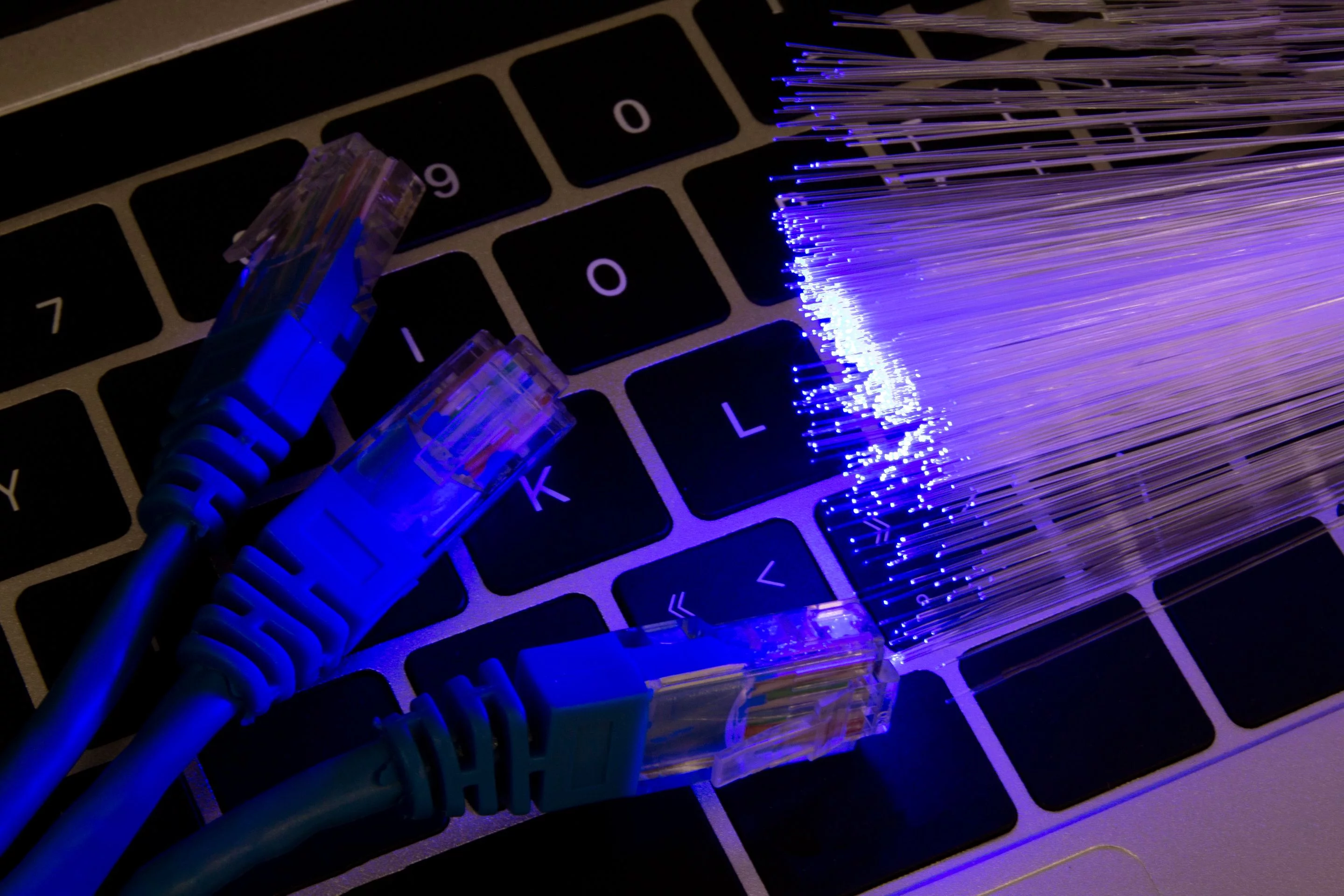Posted At: Sep 11, 2023 - 2,254 Views

Indoor plumbing, reliable electricity, and phone lines are advances that have become standard essentials. Most recently, contemporary living requires fast internet for work, study, and play. Discover the latest solution for unlocking the speediest web service around — a fiber-optic internet connection.
Fiber — The Future of Fast Internet
For decades, long-distance communications have traveled over copper cables. The newest advancement in wired transmissions is fiber-optic technology. While copper cables send electrical signals over their lines to transfer information, fiber-optic wiring uses laser pulses or light-emitting diodes to convey data as light signals through glass filaments.
The difference in the fluidity of data diffusion is comparable to taking a two-lane dirt road and replacing it with a multi-lane interstate expressway. Just as electric cars, smartphones, and the internet itself were once nascent technologies that became everyday realities for individuals worldwide, so too is fiber-optic internet on the path to becoming ubiquitous. Forward-thinking businesses and municipalities are already installing or planning robust fiber-optic cabling systems in their locations.
Whether relying on fast internet for school classes, confidential business meetings, or judicial cases, loading and buffering are not simply mere nuisances; an interruption in service could negatively affect someone’s life. Additionally, increased reliance on connected devices and the IoT for health care, utilities, and security makes having quick and reliable connections a necessity, and fiber is the solution.
The Reasons Why Fiber-optic Internet Is Superior
The progress in internet communication speeds has had much to do with the infrastructure carrying the signals. The first internet lines came over previously installed copper cable phone lines. These connections are still available as dial-up lines, also known as DSL.
With the advent of cable for television, a new system of wider copper wires that carried more bandwidth began to pop up across the country. Since these systems need to transmit denser amounts of information in audio and video over long distances, cable could offer faster internet in comparison with DSL.
Fiber systems are the next evolution in online communication. The electrons that convey data over copper wires are unimaginably quick. However, there is something more blindingly fast – light.
Light speed is the benchmark to which all other measures of velocity aspire. Fiber internet takes advantage of the speed of light by transferring information through laser pulses and allows data to travel faster than ever before.
Since fiber cables don’t require the energy flow that copper cables do, adopters of fiber internet will experience fewer outages. Fiber cables also resist electromagnetic interference and issues from the weather. The higher bitrate capacity means neighborhood and household traffic will not bog down a signal.
The comparatively slower speed of electric transfer over copper cables means signals weaken over a distance. The max speed of light through fiber cables eliminates this potential problem, which is another reason why fiber-optic internet wins every time.
Facts About the Impressive Speed of a Fiber-optic Internet Connection
The jump from DSL to cable internet was astonishing, with cable being approximately 100 times faster. While DSL tops out near 100 Mbps for downloads, cable nearly reaches 1,000 Mbps.
Fiber internet exponentially increases internet capabilities. Researchers have achieved speeds up to 44.2 terabits per second, which is one million times faster than the average speed in U.S. households. While the technology does not yet permit subscribers to access the highest reaches of fiber’s impressive velocity, they can now access internet speeds that suit their current daily needs.
One glaring limitation of cable and DSL is that upload speeds are only a fraction of what downloading can do. Upload speeds often do not achieve even 5% of download bitrates, with the fastest barely reaching 50 Mbps. What makes fiber more outstanding is that upload velocities equal those of download, meaning recipients of live streams experience virtually no degradation in video and audio quality during communication or data transfer.
With the untouchable capacity of fiber for fast internet, the technology is practically future-proof. Institutions and homes with a fiber-optic internet connection will not require another type of network for the foreseeable future.
How You Can Obtain the Most Reliable Fiber Connections for Fast Internet
As the inevitable wave of the future, households, companies, and municipalities that access fiber-optic connections receive access to fast internet now and indefinitely. Osilan’s Fiber is leading the way by engineering, constructing, installing, and maintaining the latest fiber communications systems. Contact our team to find out how to bring the best online networks to your area.
